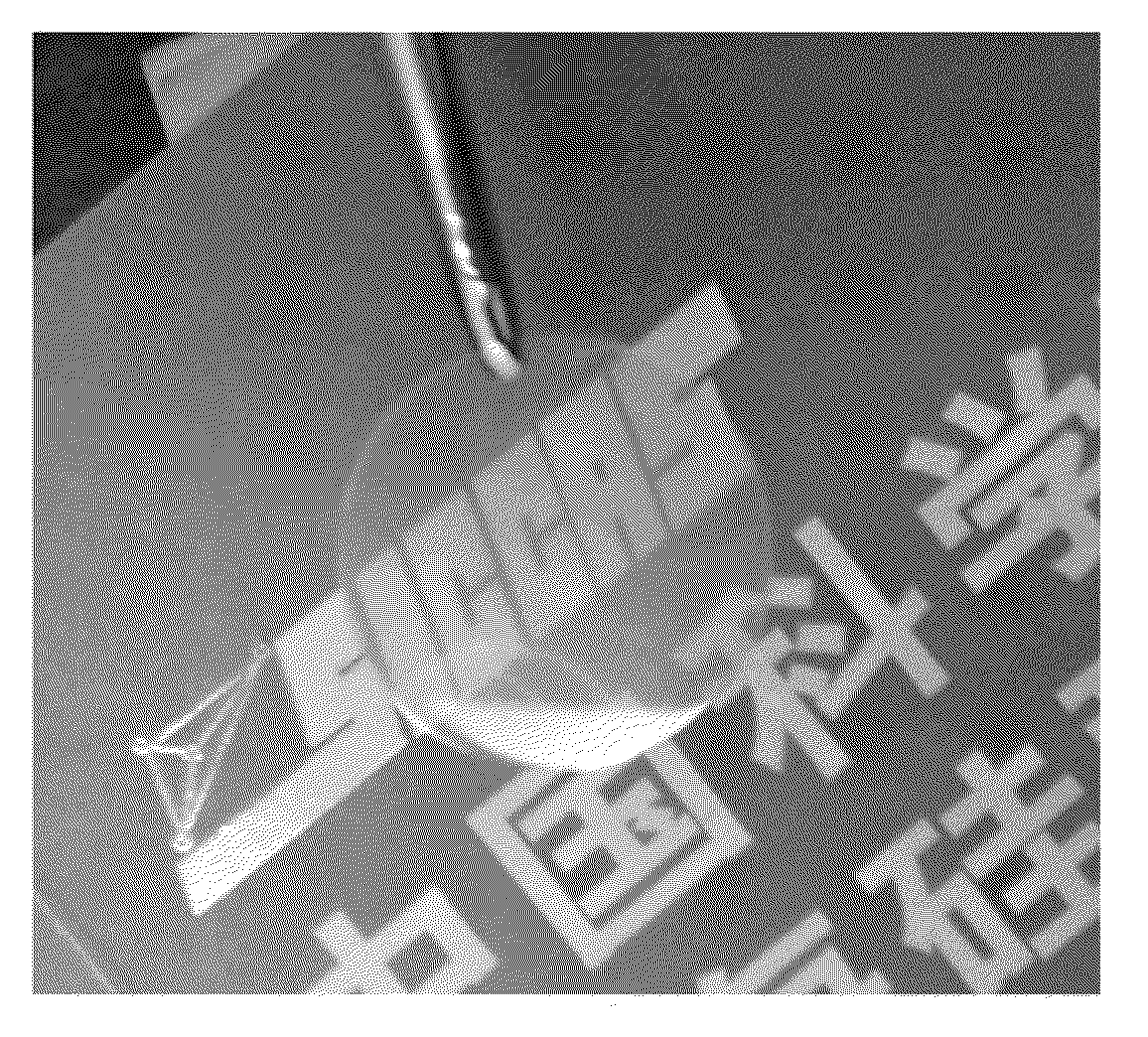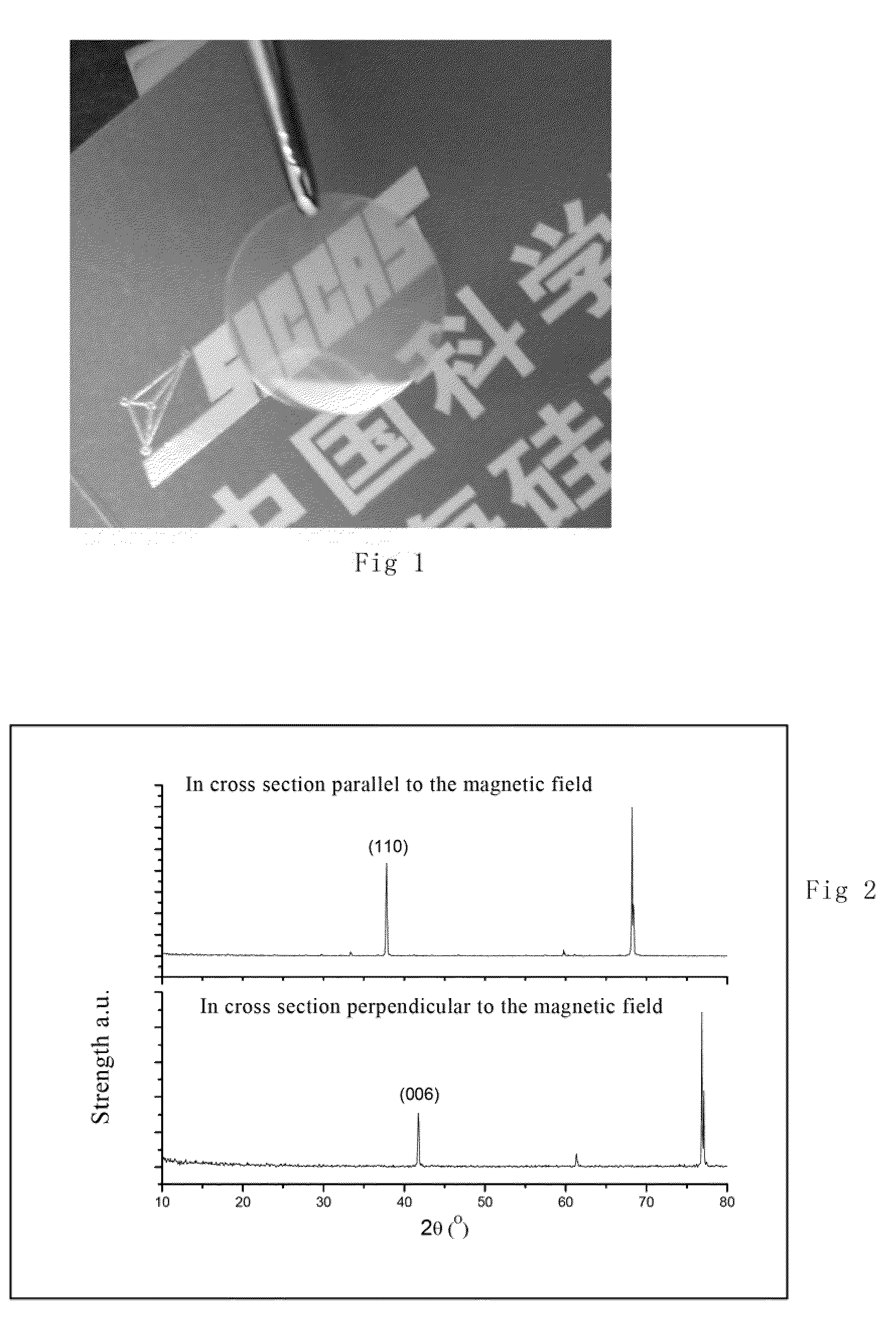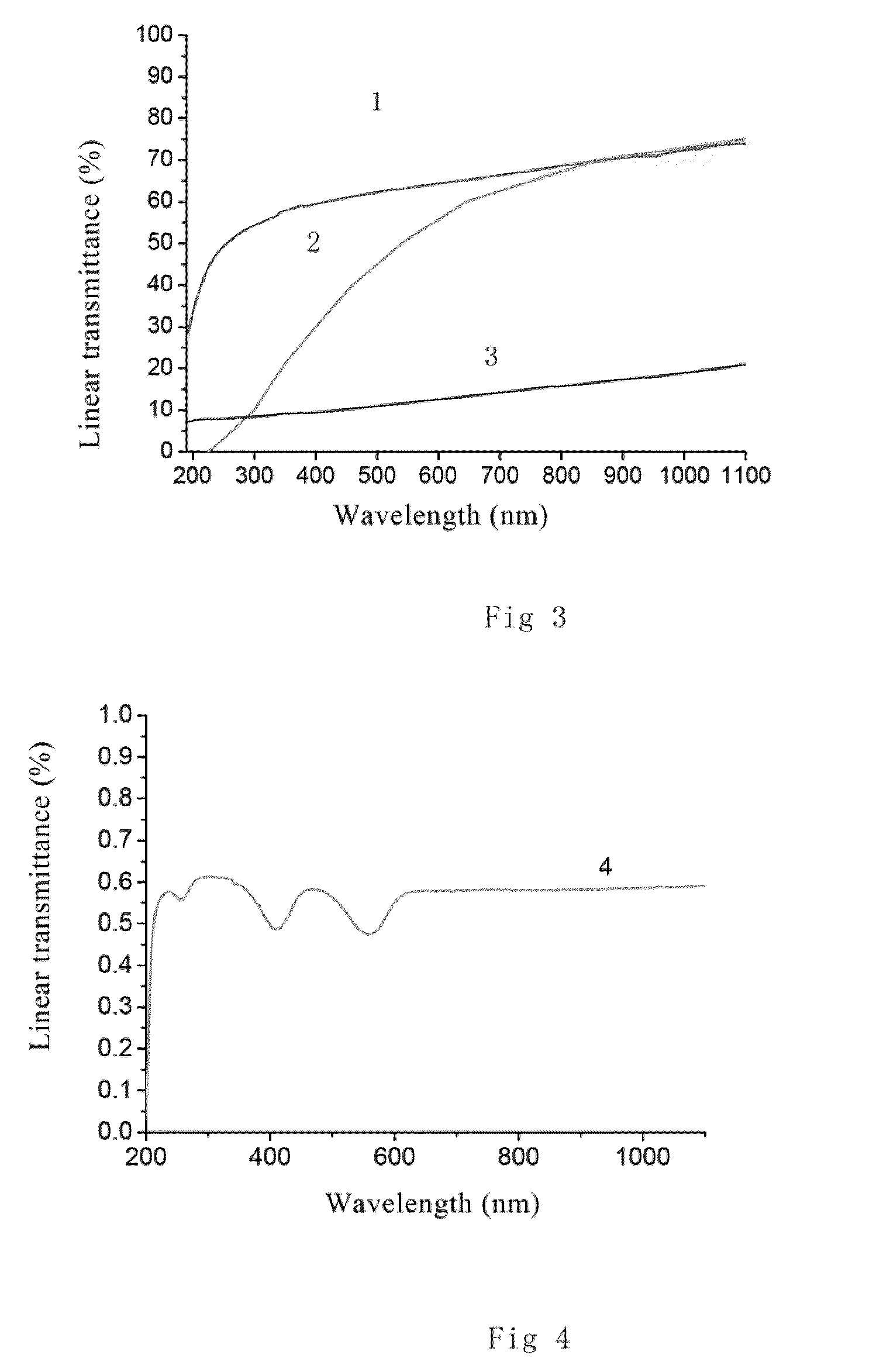Transparent alumina ceramics with oriented grains and preparation method thereof
a technology of alumina ceramics and grains, which is applied in the field of transparent alumina ceramics with oriented grains and the manufacture method thereof, can solve the problems of unavoidable reflection, refraction and birefringence in the grain boundaries, and cannot be inherently improved by transparent alumina ceramics essentially, and achieves high in-line transparency
- Summary
- Abstract
- Description
- Claims
- Application Information
AI Technical Summary
Benefits of technology
Problems solved by technology
Method used
Image
Examples
example 1
The average particle size of the alumina powder used was 0.5 μm. And the purity was 99.99%. 5000 g alumina powder, 1500 g water, 6.4 g magnesium nitrate hexahydrate (the amount relative to sintering aid MgO is 200 ppm) were homogeneously mixed. After dry, the mixture was heated to 600° C. The resultant powder was ground with alumina mortar, and sieved for later use.
The alumina powder containing MgO prepared above was added into deionized water with the solid loading of 30 vol %. Ammonium polyacrylate with the amount of 0.5 wt % relative to the alumina powder was added as dispersant. The mixture was ball milled and then dispersed with the help of ultrasonic wave for 30 minutes to obtain homogeneously dispersed suspension.
A plaster mold with a cylindrical pit in the middle was placed horizontally into a 12 T vertical uniform magnetic field. The cylindrical pit was filled with homogeneously dispersed suspension described above. The mold was moved out and demolded after 120 minutes. The...
example 2
The alumina powder used was the same as that of example 1. 5000 g alumina powder, 1500 g water, 6.4 g magnesium nitrate hexahydrate, 13.2 g chromium nitrate nonhydrate (the content of Cr2O3 relative to alumina is 0.05 wt %) were homogeneously mixed, baked to dry, then heated to 600° C. to calcine it, giving the alumina powder containing 200 ppm MgO and 0.05 wt % Cr2O3. The resultant powder was ground with alumina mortar for later use.
The preferential orientation, molding procedures were the same as those of example 1, finally sintered in hydrogen at 1820° C. for 3 hours. The resultant transparent alumina ceramics doped with Cr (alas referred to polycrystalline ruby) appeared with a color of pink, the in-line transmittance at 650 nm reaches 58%.
The polycrystalline ruby thus obtained was analyzed with X-ray diffraction result. In cross section perpendicular to the magnetic field, the diffraction peak of (006) crystal plane of the polycrystalline ruby was remarkably enhanced, with no d...
example 3
The average particle size of the alumina powder used was 0.15 μm, the purity was 99.99%. 5000 g alumina powder, 92.6 g 10 wt % titanium nitrate solution, 1500 g water were homogeneously mixed, baked to dry, then heated to 500° C. to calcine it, giving the alumina powder containing 0.05 wt % TiO2. The resultant powder was ground with alumina mortar for later use.
150 g alumina powder containing TiO2 described above and 50 g 15 wt % glycerin glycidyl ether were mixed, with 1 ml ammonium polyacrylate added as dispersant, ball milled for 2 hours, then dispersed with the help of ultrasonic wave for 30 minutes to obtain homogeneously dispersed suspension.
As soon as 2.5 ml 3,3′-Diaminodipropylamine was added into the suspension described above, the suspension was pumped to remove bubbles, with stirring at the same time. After 2-5 minutes, the mixed slurry with bubbles removed was injected into stainless steel mold, which was put in a 20 T magnetic field. The mold was removed out 2 hours lat...
PUM
| Property | Measurement | Unit |
|---|---|---|
| magnetic field | aaaaa | aaaaa |
| transparent | aaaaa | aaaaa |
| grain size | aaaaa | aaaaa |
Abstract
Description
Claims
Application Information
 Login to View More
Login to View More - R&D
- Intellectual Property
- Life Sciences
- Materials
- Tech Scout
- Unparalleled Data Quality
- Higher Quality Content
- 60% Fewer Hallucinations
Browse by: Latest US Patents, China's latest patents, Technical Efficacy Thesaurus, Application Domain, Technology Topic, Popular Technical Reports.
© 2025 PatSnap. All rights reserved.Legal|Privacy policy|Modern Slavery Act Transparency Statement|Sitemap|About US| Contact US: help@patsnap.com



